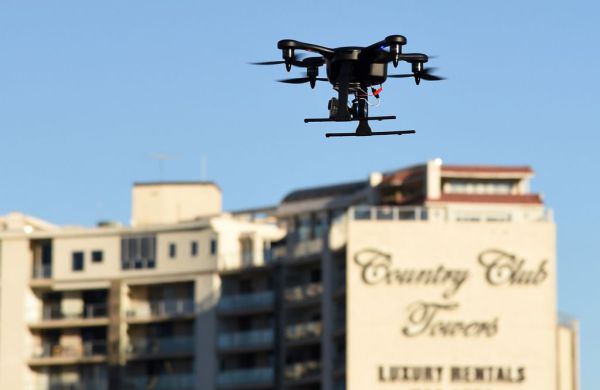Aerial surveillance is now used in a number of industries, once only reserved for the military, our airspace is now being used for a diverse set of reasons which include delivering medical supplies to inaccessible areas, crop surveillance and overhead photography. With consumer-grade drones becoming affordable and accessible to the general public, the way we monitor our airspace legally and safely has become a big issue. We can take photographs and video in any area of the sky so what are the rules that govern what is effectively becoming a toy for many people?
Due to the relative newness of public availability of drones, the law is evolving regarding their status. The House of Lords EU Committee recently called for a compulsory registration for all commercial as well as civilian drones. This was due to the perceived limited knowledge of aviation rules from private flyers. They suggested ‘that all commercial drone operators should register their drones on an online database or app in the near future, and that in the longer term this should encompass leisure users as well’.
As long as the drone weighs less than 20kg and it is not being flown for commercial use then it is possible for anyone to fly one. However once in the air it must not be flown within 150metres of a congested area and 50 metres above a person, vessel, vehicle or structure. This is going to be difficult if you are flying a drone in a park. Anyone that requires using a drone for commercial reasons will need to get permission from the Civil Aviation Authority (CAA). Applying for and gaining a license requires the need for an individual to show that they are “sufficiently competent”. However there have been cases where the CAA have taken action against individuals even if the drone is being used for domestic purposes. For example;
Robert Knowles from Cumbria was convicted in 2014 for ‘dangerous ‘use of a recreational drone, after losing control of it to near a nuclear submarine facility. He was fined £800 and ordered to pay costs of £3,500 at the Furness and District Magistrate Court.
Recording images without the consent of others is of course an issue that many people are concerned with as this could be seen as a breach of the CCTV code of practice as well as issues surrounding the Data Protection Act. The law regarding the former has been extended to cover the use of drones where they may be collecting information about certain individuals. The CCTV code of practice states that “it will be good practice for domestic users to be aware of the potential privacy intrusion which the use of UAS can cause to make sure they’re used in a responsible manner”.
And of course it is not just the infringement of personal space, it is also how any of these images and recordings that are captured are shared, especially on social media sites such as Facebook and Twitter. A video that was private instantly becomes up for public consumption and scrutiny the moment it is uploaded onto a social network. Being aware of all of the rules and regulations surrounding aviation law is essential when purchasing and using a drone. If you have any doubt, contact a solicitor without delay!
By Harry Price
Harry Price is a freelance writer from a small coastal village on the south coast. In his spare time, he loves to paint pictures of his picturesque surroundings.

